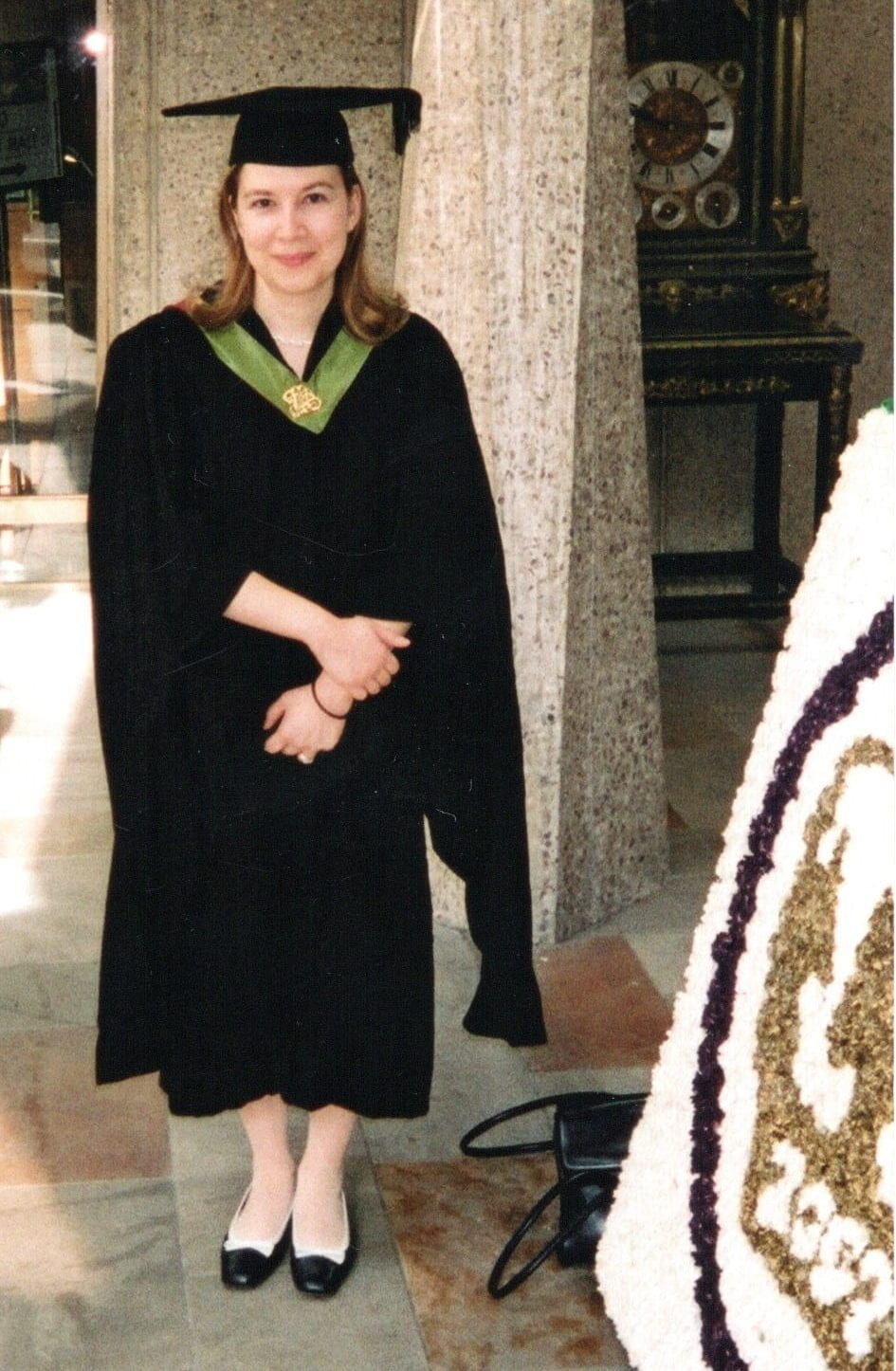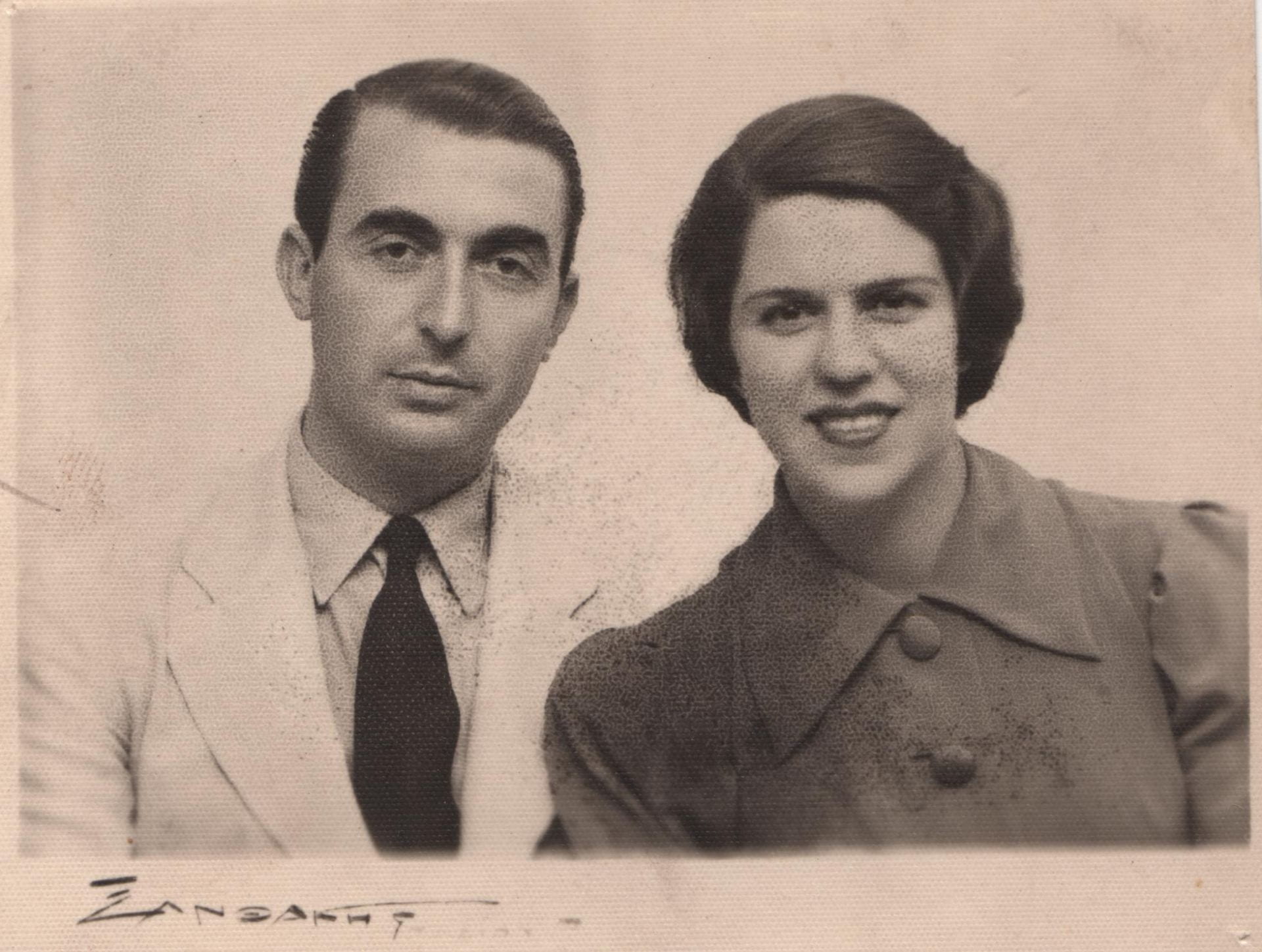 A finalist in the 2020 British Council Alumni Awards in Greece, Sophia Peloponnissiou’s (Museum and Gallery management, 2000) contribution to art and culture is more than noteworthy. Having set up the largely voluntary Katakouzenos House Museum, Sophia is on a mission to ‘revive a mid-20th century Athenian house and turn it from a residential venue to a community-oriented and education-based institution’. Read on to find out how it’s going and how she got there.
A finalist in the 2020 British Council Alumni Awards in Greece, Sophia Peloponnissiou’s (Museum and Gallery management, 2000) contribution to art and culture is more than noteworthy. Having set up the largely voluntary Katakouzenos House Museum, Sophia is on a mission to ‘revive a mid-20th century Athenian house and turn it from a residential venue to a community-oriented and education-based institution’. Read on to find out how it’s going and how she got there.
Can you tell me about your time at City?
I started my MA in Museums and Gallery Management in September 2000. It was a year to remember. I had the chance to be taught by such great professors and I’ll always remember them not only as professors but also as personalities.
I’d like to especially mention Vicky Woolard the Course Leader, for teaching me the importance of method, John Last, for showing me a different way to approach my research and Dr Iain Robertson, for believing in me.
During my year at City I had the opportunity to discover many different paths leading me to knowledge and helping me discover art and culture. I visited so many museums and galleries and it was a real privilege to read at the London Library. The conditions there are ideal for research and it certainly helped when writing-up my various essays and my thesis.

Last but not least, during my studies I had the privilege to work as a volunteer at the Museum of the Bank of England. I’ll always be grateful to its curator John Keyworth, and all my colleagues there for their support and the way they treated me.
I cannot overstate the importance of the education I received at City University, 20 years ago, and the overall experience of that year, in achieving many of the things I did afterwards; this I shall never forget.
What happened after you graduated?
After my graduation I returned to Greece, at my previous position as an assistant to the Governor of the National Bank of Greece, but I knew that I wanted to follow a different path in my life.
A year later I returned to London and stayed there for five unforgettable years with my husband,
I had the chance to travel through England and Scotland, visiting so many museums, galleries, historical places, and house-museums. I also had the chance to collaborate with a gallery and present to a Greek audience an exhibition of works by English artists. In 2005, I gave birth to my daughter and we decided that it was time to return to Greece.
Thanks to my studies, I was reassigned at the Historical Archives of National Bank of Greece and from 2008 until now I have had the privilege to work at the National Bank of Greece’s Cultural Foundation.
Although I honour the opportunity given to me through my professional career, my true pride is that I had the chance to set-up the Katakouzenos House Museum (KHM), inspired by my Master’s thesis and probably the first of its kind in Greece to operate as the house museums in the UK.
Can you tell us a bit more about Katakouzenos House Museum?
Houses, homes, go as far back as humans do. They have always played a major role in the life of people, safeguarding their values, preserving their memories, structuring their stories. Lives are remembered, retold, recreated but also inspired, planned and experienced inside, around and because of houses. They are the primordial shells of human thought and action, the primeval elements of what makes as humans.


ΚΗΜ’s goal is to revive a mid-20th century Athenian house and turn it from a residential venue to a community-oriented and education-based institution, following the principles and expanding on the possibilities of house museums.
The former owners of the house, Angelos and Leto Katakouzenos, belonged to the intellectual elite of their times and functioned as cultural ambassadors of their country abroad and arbiters of international tendencies to Hellas.
Since the 1960s, during the time the couple lived there, the house functioned as a literary salon: its rooms hosted many visitors of international fame, mainly artists, but also writers and poets. The flat also contains a representative collection of works by the most important artists of the so-called Hellenic “1930s generation”, and by many international artists too.
I am very proud of my volunteer work at the Katakouzenos House Museum from 2008 until now and its progress during the last twelve years, especially given the extremely limited financial support received.
The opening was made in collaboration with the John Martin Gallery and the Freud Museum. I had the privilege to present the work of Richard Cartwright side by side with the paintings from the permanent collection of the house (among them a painting by Marc Chagall) and it was really great that Richard, Jonh Martin and his colleagues came to Greece for three days in order to personally attend this opening.
I also managed to collaborate with the Freud Museum, in London, which was in many ways an inspiration for my work at the KHM.
I truly believe that a significant part of the success of the opening of the Katakouzenos House Museum was due to these two collaborations and this gave me the strength to continue my volunteer work and my efforts to stay close to the British civilisation and culture for all those years.
What sparked your interest in British art and culture?
Μy late father, Admiral Emmanuel Peloponnissios OBE, is the person who passed to me his love for most things British and whose example I try to follow. He was born in Kimolos, a Greek island, in1940. Ηis father was lost in the Battle of the Atlantic, the longest continuous military campaign in World War II. As he grew, he learned to speak English by reciting Shakespeare by heart. He managed to study in London in 1978 and his was honoured by Queen Elizabeth on 1989 as he saved 480 children who came from many schools from England for a cruise trip in Greece and were sunk by an another boat. His moto during his life was from the famous poem written by English poet John Keats:
Beauty is truth, truth beauty,
– that is all ye know on earth,
and all ye need to know.
(Did you know that one of John Keats’ most famous poems ‘Ode on a Grecian Urn’ was inspired by a Greek urn that he saw in the British Museum?)
As you can imagine with such a father, it was my destiny to have an admiration in British art and culture and as I grew older I realised that through the Britons I had discovered many things about the Greeks that I once ignored.
Congratulations again on being a finalist for the British Council Lifetime Achievement award. Has being a finalist opened any new opportunities?
It was a real honour to be a finalist for the British Council Lifetime Achievement Award. It was certainly an exciting process and while gathering the information on what I had done at the KHM, I was reminded of many things I had forgotten over the years. It also led to do a bit of soul-searching, which is an opportunity in itself! And I re-connected with the City University twenty years after my graduation which was also really valuable for me!
Why might City alumni consider getting involved with the British Council in Greece or in general?
Since the years immediately after the Second World War and all the way until today, the British Council has had an important role in Greece. It is a strong link between the two counties, and especially after Brexit, its mission becomes more important than ever. So, I would certainly advise any City alum in Greece who wants to keep his/her connection – especially a cultural one – with the UK alive to actively keep in touch with this historic and increasingly relevant British institution.
How has the pandemic impacted your industry and your role specifically?
In my role as KHM’s curator, my main concern is to find ways to continue being helpful to our visitors and to our society more generally. Given the operational difficulties arising from the pandemic, I tried to find sponsors to develop and launch some virtual projects. I am proud to say -and at the same time thankful to the sponsors – that I managed to find support from three different sources for respective projects.
Having said that, and even though all the people working at the KHM are offering their time, ideas and energy on a purely voluntary basis. Covering the operational expenses remains a huge challenge under any conditions, but even more so, during these pandemic days.
What does the future look like for British culture and art in Greece?
Modern British culture and art have certainly been influenced by Greek culture and art, especially the classical ones, they have also significantly influenced modern Greek ones. British education was and is a source of strong interest for Greek students and British language, music, and art are still a dominant influence. I certainly hope that from a political point of view, the necessary conditions for this strong and mutual relationship, including travelling between the two countries and staying long-term at them, will remain in place.
What do you love most about the work that you do?
My work as a curator at the Katakouzenos House Museum made me realise how far my opportunities have driven me and helped me discover the path I wish to follow. Although following the moral principles I had adopted at the beginning made for a difficult path, it nevertheless gave me the opportunity not only to be creative but also to support many people and help create a lot of important works of art. Over the years, I have tried to do my best and I am proud of what has been achieved at the KHM.
Do you have any advice for anyone looking to follow in your footsteps?
Fight for your dreams and never give up. “Worthy is the price paid” as the Nobel-prize winner Odysseas Elytes wrote in one of his poems.
In closing, I would like to say that I could not have managed to go as far as I have without my family: my husband, and my daughter, who have stood by me all these years.